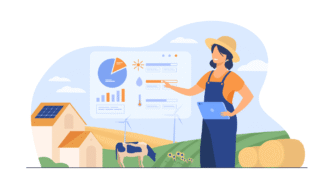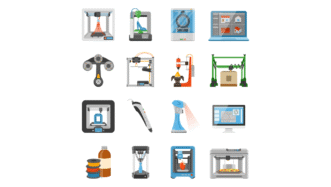LESSON OVERVIEW
Artificial Intelligence has been a hot topic for some time now. When asked about the topic most people think about a humanized fully conscious machine hell-bent on dominating the world and making us its slaves ?The reality is a bit different and less dramatic. In this lesson plan, your students will learn how AI technology (aka artificial intelligence) is being used in our everyday lives. While doing so, there will be plenty of chances to confront the stereotype and have an interesting future-oriented discussion. On top of that, this worksheet includes a word formation task focused on using suffixes.
This lesson consists of two main sections and a warm-up pairwork speaking exercise. In the first task, your students will have to talk about some basics concerning artificial intelligence. The pictures on the left could give them a couple of clues but these introductory talking points are very general and lead students into the lesson topic. What follows is a vocabulary section, i.e. word formation tasks.
VOCABULARY – WORD FORMATION TASKS
The first task for word formation is a modified version of the classic FCE Use of English Part 4 exercise, where you need to transform a given word so that it fits into the gap grammatically and logically. Our version is a bit easier. It’s because students also have a list of possible suffixes they need to use to create appropriate words for the gap. The suffixes used here are those characteristic for nouns and adjectives. It might be an extra point to emphasize after the task to let your students remember which suffixes they can use for creating nouns or adjectives. If your students are not familiar with such activities, clarify that the spelling in the base word may change a bit too (do the first sentence with them to show that in practice) so it’s not just about adding a suffix.
Next, you have a quick game for practising using the suffixes to create new words. Split your class into groups and give each group 2 suffixes from the previous exercise (one for adjectives and for nouns). Ask them then to write down as many words with those suffixes within a set time limit. The team with most proper words wins! If you have time, follow up with a short sub-task for them: creating gapped sentences with 2 of the words they had on the list. However, if you’re running low on time, you can turn that into homework and use it as a quick warm-up on your next classes.
LISTENING COMPREHENSION AND DISCUSSION
This section will include 2 videos, 2 listening comprehension tasks and 2 sets of discussion points. You’ll kick off with a video that introduces the topic of artificial intelligence and give your students some background for the speaking parts. There are two comprehension tasks for that video. In the first one they need to listen for specific information related to AI, while the other requires them to listen for particular words. That task also includes some nice phrases you might consider highlighting, i.e. call the shots, coin a term or venture capitalist. After that listening comprehension, you move to a pair (or group) discussion on how artificial intelligence is used now and what the prospects for the future are. Afterwards, watch another video with your students where you will show them what Google has recently achieved in applying AI technology which should lead into an interesting discussion as well.
RELATED WORKSHEET – AI CREATES JOBS
This additional worksheet consists of tasks around an article about AI and jobs that it will create rather than destroy. It’s a reading-based lesson with some listening comprehension as well. By the way, the audio file for the article in that worksheet is generated with the use of artificial intelligence 🙂 Could you tell a difference? See it yourself here.
WORKSHEETS
Subscribe to unlock these and many other Standalone lesson with the Premium plan
Subscribe














Its good but where is / is there the /a script for the videos?
Hey! To find a transcript:
1. Go to Youtube.
2. Click the ellipsis (…) button and then Open Transcript.
3. Check whether there is an English transcript. If you only see English (auto-generated) then you will need to work on the transcript as it is going to have errors. But if you’re lucky and somebody provided the transcript (it just says ‘English’), you might have a very good quality transcript which you can use. Nevertheless, I recommend always checking if it is fine!!!
Excellent
great lesson! thanks!
Thanks Stan. I’ll have to check on my computer. I’ve just opened the pdf on my tablet and it works. So it’s definitely on my end.
I’ve enjoyed the lesson, and I’d like to see more materials related to Cambridge exams because it’s a useful way of escaping from the traditional books. Besides, we can explore authentic material based on real life topics, those which are approached during the exams.
I’m looking forward to seeing more of it.
Thanks for your comment! We’re happy you found the lesson and the exam task useful 🙂 You can check out our other lessons with exam tasks here.